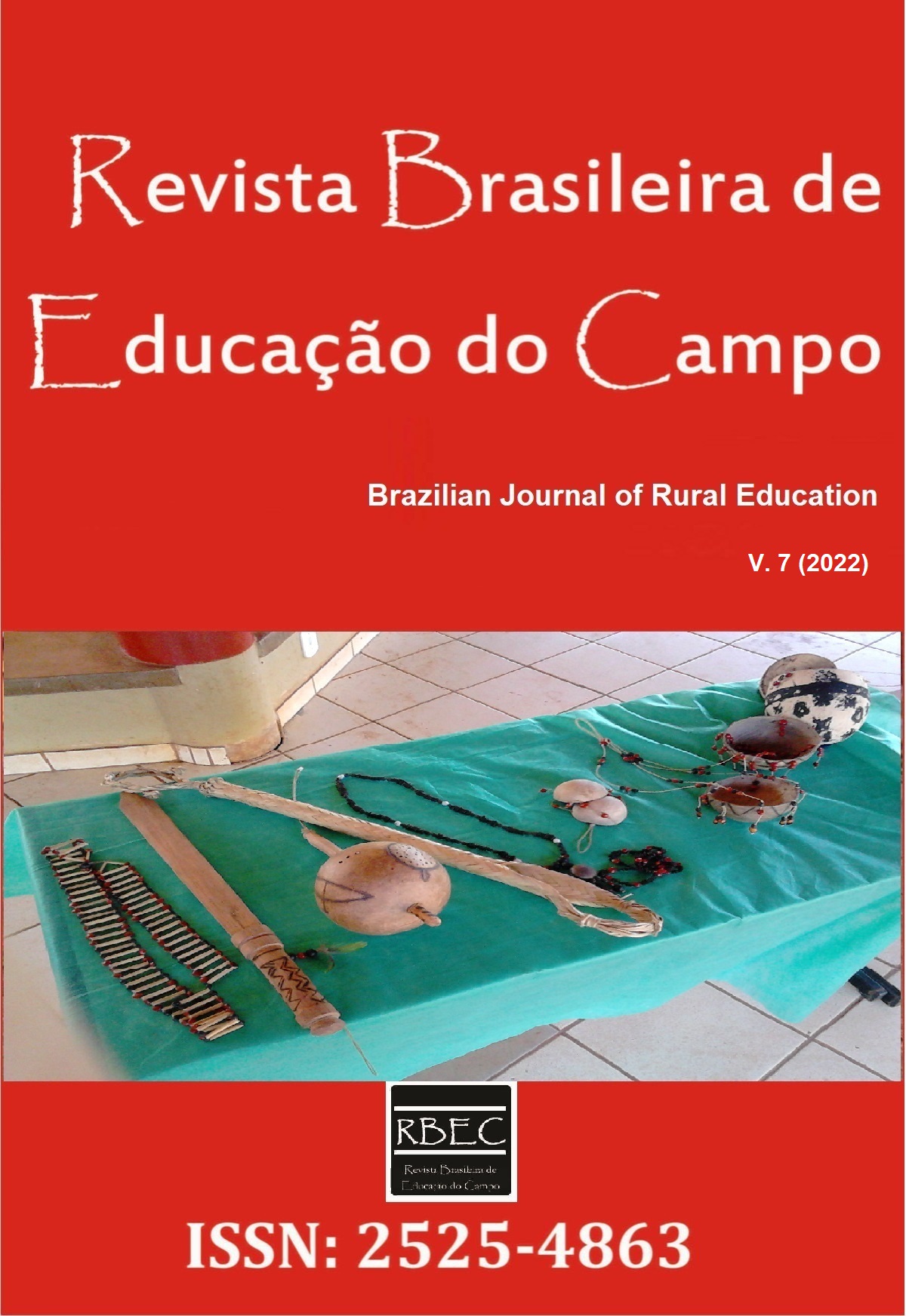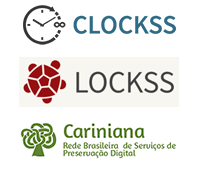Representations about institutional food by rural middle school boarding school students
DOI:
https://doi.org/10.20873/uft.rbec.e12222Abstract
ABSTRACT. Considering the importance of proper nutrition in adolescence and that this can be profoundly affected by changes in routine life of the students, such as leaving their home environment to live in a boarding school, the goal of this study was to analyze the social representation of these students in boarding school regime. A qualitative, exploratory research was carried out, based on the Theory of Social Representations. Individual interviews were conducted, and the discourse generated was analyzed using the Discourse of the Collective Subject technique. The representations of food, most of the interviewees considered that feeds well, and that high-quality food must have all the necessary nutrients; in addition, the change to the current institution have influenced the feeding times. The institutional foods were considered of good quality; however, the taste of the preparation has been mentioned as a negative point. The interviewees attributed the institutional food an important role in socialization, exerting positive influence on adaptation to boarding school.
Keywords: social representation, boarding school, rural middle school, adolescents, institutional food.
Downloads
Literaturhinweise
Alves, H. J., & Boog, M. C. F. (2007) Food behavior in student residence halls: a setting for health promotion. Revista Saúde Pública, 41(2), 197-204. https://doi.org/10.1590/S0034-89102007000200005
Borba, D. M., & Correia, I. C. M. (2006). O ser família brasileira. ETIC – Encontro de Iniciação Científica, 2(2), 2006. Recuperado de: http://intertemas.unitoledo.br/revista/index.php/ETIC/article/viewFile/1340/1280. Acesso em: out. 2015.
Branen, L., & Fletcher, J. (1999) Comparison of college students' current eating habits and recollections of their childhood food practices. Journal of Nutrition Education, 31(6), 10-304. https://doi.org/10.1016/S0022-3182(99)70483-8
Brasil (2012). Ministério Da Saúde. Conselho Nacional de Saúde. Aprova as diretrizes e normas regulamentadoras de pesquisas envolvendo seres humanos. Resolução n° 466, de 12 de Dezembro de 2012. Legislação Federal.
Carneiro, H. (2003). Comida e Sociedade: uma história da alimentação. Rio de Janeiro: Elsevier.
Cheung, T.L.; Batalha, M.O., & Lambert, J.L. (2011). Tipologia e representação da comida para brasileiros urbanos. In III Colóquio de Agricultura Familiar e Desenvolvimento Rural. Porto Alegre, RS.
Coon, K. A., Goldberg, J., Rogers, B. L., & Tucker, K. L. (2001). Relationships between use of television during meals and children's food consumption patterns. Pediatrics, 107(1), 1-9. https://doi.org/10.1542/peds.107.1.e7
Costa, A. L. F., Duarte, D. E., & Kuschnir, M. C. C. (2010). A família e o comportamento alimentar na adolescência. Revista Adolescência e Saúde, 7(3), 52-58.
Costa, S. S. (2013). Refeitório Escolar: Espaço de aprendizagem e troca de conhecimentos sobre alimentação. (Dissertação de Mestrado). Universidade de Brasília, Brasília.
Deshmukh-Taskar, P., Nicklas, T. A., Yang, S. J., & Berenson, G. S. (2007). Does food group consumption vary by differences in socioeconomic, demographic, and lifestyle factors in young adult? The Bogalusa Heart Study. Journal of the American Dietetic Association, 107(2), 34-223. https://doi.org/10.1016/j.jada.2006.11.004
Felipe, M. L. F. M. (2011). Análise da importância do regime de internato para os alunos do curso técnico em agropecuária do Instituto Federal do Ceará Campus Iguatu. Revista do IFAL, 2(1), 7-22.
Garcia, R.W. D. (1997). Representações sociais da alimentação e saúde e suas repercussões no comportamento alimentar. Physis: Revista de Saúde Coletiva, 7(2), 51-68. https://doi.org/10.1590/S0103-73311997000200004
Gillman, M. W., Rifas-Shiman, S. L., Frazier, A. L., Rockett, H. R., Camargo, C. A. Jr.,& Field, A. E. (2000). Family dinner and diet quality among older children and adolescents. Archives of Family Medicine, 9(3), 40-235. https://doi.org/10.1001/archfami.9.3.235
Gondim, S., & Fischer, T.(2009). O discurso, a análise do discurso e a metodologia do discurso do sujeito coletivo na gestão intercultural. Cadernos Gestão Social, 2(1), 9-26.
Ifes – Instituto Federal do Espírito Santo (2018). Conheça a política de assistência estudantil do Ifes. Recuperado de: https://www.ifes.edu.br/noticias/17768-conheca-a-politica-de-assistencia-estudantil-do-ifes. Acesso em: abril 2022.
Ifes – Instituto Federal do Espírito Santo (2021). Internato Campus Itapina. Recuperado de: https://www.ifes.edu.br/images/stories/-publicacoes/processos-seletivos/alunos/2021/2021-12/internato-itapina.pdf. Acesso em: abril 2022.
Lefèvre, F., & Lefèvre, A. M. C. (2005). Discurso do Sujeito Coletivo: um enfoque em pesquisa qualitativa. Caxias do Sul, RS: Editora Educs.
Lefèvre, F., & Lefèvre, A. M. C. (2003). Princípios básicos e conceitos fundamentais do Discurso do Sujeito Coletivo. In Lefèvre, F. Discurso do Sujeito Coletivo: um enfoque em pesquisa qualitativa (pp. 13-35). Caxias do Sul, RS: Editora Educs.
Lemos, M. C. M., & Dallacosta, M. C.(2005). Hábitos Alimentares de Adolescentes: Conceitos e Práticas. Arquivos de Ciências da Saúde da Unipar, 9(1), 3-9.
Leonardo, M. (2009). Antropologia da alimentação. Revista Antropos, 3(2), 1-6.
Mendes, K. L., & Catão, L. P. (2010). Avaliação do consumo de frutas, legumes e verduras
por adolescentes de Formiga-MG e Suas Relações com Fatores Socioeconômicos. Revista Alimentação e Nutrição, 21(2), 291-296.
Moreira, S. A. (2010). Alimentação e comensalidade: aspectos históricos e antropológicos. Ciência e cultura, 62(4), 23-26.
Magalhães, H. H. S. R., & Porte, L.H.M. (2019). Percepção de educadores infantis sobre educação alimentar e nutricional. Ciência & Educação, 25(1), 131-144. https://doi.org/10.1590/1516-731320190010009
Moscovici, S. (2003). Representações sociais: investigações em psicologia social. Petrópolis: Vozes.
OMS - Organização Mundial da Saúde. (1995). La salud de los jóvenes: un reto y una esperanza. Genebra: OMS.
Ramos, S. A., Souza, F. F. R., Fernandes, G. C. B., & Xavier, S. K. P. (2013) Qualitative evaluation of menu and satisfaction survey in a foodservice. Alimentação e Nutrição= Brazilian Journal of Food Nutrition, 24(1), 29-35.
Rotenberg, S., & Vargas, S. (2004). Práticas alimentares e o cuidado da saúde: da alimentação da criança à alimentação da família. Revista Brasileira de Saúde materno infantil, 4(1), 85-94. https://doi.org/10.1590/S1519-38292004000100008
Santos, J. S., Costa, M. C. O., Nascimento, S. C. L., Silva, M. C. M., Souza, K. E. P., & Melo, B. O. (2005) Anthropometric profile and food intake of adolescents in Teixeira de Freitas - Bahia, Brazil. Revista de Nutrição, 18(5), 623-632. https://doi.org/10.1590/S1415-52732005000500005
Serra-Majem, L., Ribas, L., Perez-Rodrigo, C., Garcia-Closas, R., Pena-Quintana, L., & Aranceta, J. (2002). Determinants of nutrient intake among children and adolescents: results from the enKid Study. Annals of Nutrition and Metabolism, 1(46), 8-31. https://doi.org/10.1159/000066398
Silva, J. G., Teixeira, M. L. O., & Ferreira, M. A. (2014). Alimentação na adolescência e as relações com a saúde do adolescente. Texto e Contexto Enfermagem, 23(4), 1095-103. https://doi.org/10.1590/0104-07072014000570013
Veiros, M. B.(2002). Análise das condições de trabalho do nutricionista na atuação como promotor de saúde em uma unidade de alimentação e nutrição: um estudo de caso (Dissertação de mestrado). Universidade Federal de Santa Catarina, Florianópolis.
Veiros, M. B., & Proença, R. P. C. P. (2003). Avaliação qualitativa das preparações do cardápio em uma unidade de alimentação e nutrição - método AQPC. Nutrição em Pauta, 11, 36-42.
Zancul, M. S. (2008). Orientação nutricional e alimentar dentro da escola: Formação de conceitos e mudanças de comportamento (Tese de Doutorado). Universidade Estadual Paulista, Araraquara.
Veröffentlicht
Zitationsvorschlag
Ausgabe
Rubrik
Lizenz
Copyright (c) 2022 Renata Gati Dalla Bernadina, Luciana Helena Maia Porte Porte

Dieses Werk steht unter der Lizenz Creative Commons Namensnennung 4.0 International.
Creative Commons Attribution License
Creative Commons Attribution License
Proposal for Copyright Notice Creative Commons
1. Policy Proposal to Open Access Journals
Authors who publish with this journal agree to the following terms:
A. Authors retain copyright and grant the journal right of first publication with the work simultaneously licensed under the Creative Commons Attribution License that allows sharing the work with recognition of its initial publication in this journal.
B. Authors are able to take on additional contracts separately, non-exclusive distribution of the version of the paper published in this journal (ex .: publish in institutional repository or as a book), with an acknowledgment of its initial publication in this journal.
C. Authors are permitted and encouraged to post their work online (eg .: in institutional repositories or on their website) at any point before or during the editorial process, as it can lead to productive exchanges, as well as increase the impact and the citation of published work (See the Effect of Open Access).














